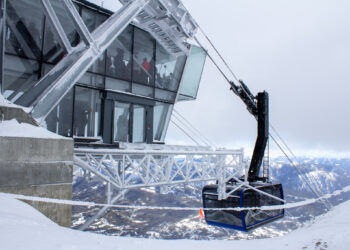Group discusses tools to combat brucellosis
By Jessianne Castle EBS ENVIRONMENTAL & OUTDOORS EDITOR
BOZEMAN – Following extensive efforts in the last decade to minimize the spread of brucellosis from elk to cattle, a group of stakeholders, Montana Fish, Wildlife and Parks and the Department of Livestock are collaborating to further reduce the spread of the contagious disease within elk herds.
During an annual meeting of the Brucellosis Elk Working Group facilitated by Montana Fish, Wildlife and Parks on July 25, the 10-member citizen panel brainstormed tools the wildlife department can use to reduce elk-to-elk transmission. As early as the 1990s, brucellosis has been a target of research and public attention since it causes abortion in livestock, elk and bison and is transmitted through reproductive tissue like afterbirth. Humans can also contract the illness.
Last year, one elk tested positive out of 100 captured during routine surveillance efforts in the Tendoy Mountains southwest of Dillon—an area that was outside the zone where brucellosis has already been found. This prompted the fourth expansion since 2010 of the Designated Surveillance Area, a swath of land extending north to Three Forks and south to the Yellowstone National Park boundary, and stretching east and west from Carbon County to Dillon.
Within the DSA, the Department of Livestock requires producers to vaccinate and test for the disease, and institutes quarantines if any animals are found to have exposure to the disease. Many livestock producers fear federal brucellosis regulations threaten the viability of the livestock industry within the Greater Yellowstone, thus driving some landowner intolerance for elk; if one domestic cow tests positive for the disease, the entire herd and all neighboring herds are placed under a quarantine that can last for months.
“It scares the hell out of me to think about the DSA expanding for the next 100 years to the entire Western U.S. and I think that’s a real possibility,” said Lorents Grosfield, a cattle rancher from Big Timber and a member of the working group. “So for the long term, we should take the responsibility of looking at it and seeing if we can come up with anything. I realize it’s going to be very difficult.”
While a relatively effective vaccination is available for use in cattle, further research to develop a more effective vaccination that could also be used on elk is restricted as long as the bacteria remains on the Select Agent and Toxins List. This directory compiled by the federal Centers for Disease Control and Prevention, prohibits handling of biological agents that pose a significant threat to people, plants and animals.
A large portion of the meeting was dedicated to conversations about immunocontraception, a birth control method that uses the body’s immune response to prevent pregnancy for a given period of time. Several drugs have been developed and successfully used on wild horses and urban deer to prevent over-population.
Members of the group voiced interest in exploring whether contraception could be used on a small scale in elk captured for research to prevent pregnancy in diseased cow elk—and thus prevent abortion and the spread of the disease—in herds that are already above population objectives.
According to DOL brucellosis program veterinarian Eric Liska, additional research into the impacts of the immunocontraceptive on elk, as well as public outreach and review, would be necessary before any serious discussion of implementation.
They also considered whether hazing, or driving a group of elk away from another group or site, could be selectively used to prevent infected elk from mingling with healthy elk.
“Some of these tools are basically carrots or sticks,” said group member Ken Hamlin, retired FWP biologist from Bozeman. “We’ve mostly been dealing with sticks and I think we need to investigate and be pushing a little more for some of the carrot approach for attracting elk to certain areas rather than the stick approach of trying to push them.”
As noted by the group, this method includes habitat improvements or changes in the hunting season that could draw elk away from cattle or reduce their tendency to congregate in large herds.
“I think as a group we have to be careful not to not let ourselves think about something and do something because it seems small,” said Paradise Valley cattle producer Druska Kinkie, a member of the working group. “Sometimes only the small things can grow and make a difference.”
During the conversation, Wildlife Management Section Chief Quentin Kujala commended the group for their productivity. “We think this is one of our better assisted working groups,” he said. “I don’t see so many advocates sitting at this table as folks chasing a solution.”
At the meeting’s conclusion, the group determined to meet a second time in August to further discuss ways of preventing the spread of brucellosis in elk.
Visit fwp.mt.gov/fishAndWildlife/management/elk/workingGroups/areasWithBrucellosisWG for more information.












